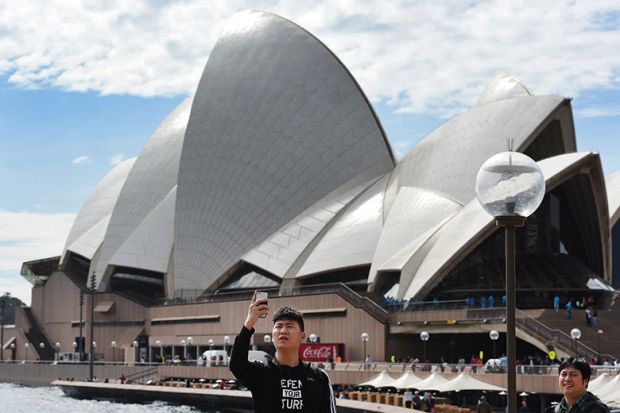Australia’s universities now rely on overseas students for more than one-fifth of their money after income from international tuition fees skyrocketed by A$1 billion (£570 million) last year.
Statistics from the higher education regulator also suggest that for-profit colleges are extremely dependent on foreign students, many of them lured away from rival providers.
The report by the Tertiary Education Quality and Standards Agency shows that the average Australian university obtained 21 per cent of its revenue from overseas students last year, about two percentage points higher than in 2016.
Almost two-fifths of international university students signed up for courses when they were already in Australia, suggesting an increasing dependence on repeat trade rather than freshly arrived international students.
The top-tier Group of Eight universities looked to China for 64 per cent of their new overseas recruits, with the Regional Universities Network similarly reliant on India and Nepal. Forty-five per cent of universities’ overseas student recruitment is concentrated in management and commerce courses, compared with about 20 per cent of their domestic recruitment.
The dependence on management and commerce students is far higher in for-profit colleges, where 83 per cent of international student recruitment is concentrated in these disciplines. For-profit providers procure 75 per cent of their foreign enrolments from people already in Australia.
Anthony McClaran, chief executive of Teqsa, said that he was concerned about the “significant apparent churn” in students switching providers and the “very heavy subject concentration” in management and commerce. He said that more than 80 per cent of providers currently seeking initial registration with Teqsa offered business and commerce courses.
“The regulatory system should promote diversity,” he said. “A subject concentration of over 80 per cent, either in terms of international students or the providers themselves, is clearly not diverse.”
Catriona Jackson, chief executive of Universities Australia, said that financial services were the largest contributor to Australia’s economy, generating A$140 billion a year and employing 450,000 people. “It’s easy to understand why these subjects are so popular,” she said.
But former Monash University demographer Bob Birrell said that the subject concentration and the level of churn were consistent with anecdotal reports of foreign students enrolling with universities – to boost their chances of obtaining visas – and then switching to cheaper providers after arriving in Australia.
In 2007, Dr Birrell blew the whistle on what has become a notorious migration scam. Thousands of foreign students abandoned degrees to start training courses in cooking or hairdressing, which provided an almost guaranteed pathway to permanent residency.
He said that business degrees were now the preferred route for students motivated by work or migration rather than education. “What we’re seeing has elements in common with the cooking experience. It’s nowhere near on the same scale yet, but it’s growing rapidly off a low base. There should be alarm bells ringing.”
Mr McClaran said that while Teqsa did not control student visas, it had discussed its concerns with other regulators.
He said that Teqsa was not overly worried about universities’ financial reliance on overseas students. But if it deemed individual institutions to be at financial risk, it could ask to see their plans for managing any downturn in international fee revenue.
Caroline Perkins, executive director of the Regional Universities Network, said that last year’s capping of teaching grants meant that foreign students were the only source of revenue growth. “Government policy has pushed universities into this over-reliance on international students,” she added.
Register to continue
Why register?
- Registration is free and only takes a moment
- Once registered, you can read 3 articles a month
- Sign up for our newsletter
Subscribe
Or subscribe for unlimited access to:
- Unlimited access to news, views, insights & reviews
- Digital editions
- Digital access to THE’s university and college rankings analysis
Already registered or a current subscriber? Login








